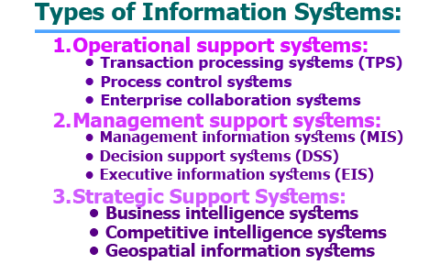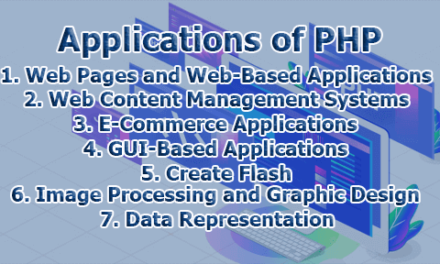Top 10 Types of Information Security Threats for IT Teams:
In the ever-evolving digital landscape, information security has become a paramount concern for organizations across the globe. As businesses increasingly rely on technology to drive their operations, the threat landscape for information security continues to expand and diversify. IT teams play a crucial role in safeguarding sensitive data and ensuring the integrity, confidentiality, and availability of critical systems. In this article, we will delve into the top 10 types of information security threats for IT teams.
1. Malware Attacks: Malicious software, or malware, remains a persistent threat to information security. This category includes viruses, worms, Trojans, ransomware, and other harmful programs designed to compromise the integrity of systems and data. Malware can infiltrate networks through infected emails, malicious websites, or compromised software. IT teams must implement robust antivirus solutions, conduct regular system scans, and educate users about safe online practices to mitigate the risk of malware attacks.
2. Phishing and Social Engineering: Phishing attacks involve deceptive tactics to trick individuals into divulging sensitive information, such as login credentials or financial details. Social engineering techniques, which exploit human psychology, are often employed in phishing campaigns. IT teams should prioritize user awareness training to recognize and report phishing attempts. Additionally, implementing email filtering solutions and multi-factor authentication can add layers of protection against these types of threats.
3. Advanced Persistent Threats (APTs): APTs are sophisticated and targeted attacks orchestrated by well-funded and highly skilled adversaries. These threats often involve prolonged and stealthy campaigns with the objective of infiltrating networks and extracting sensitive information. IT teams must adopt advanced threat detection mechanisms, conduct regular security audits, and stay abreast of emerging threat intelligence to counter APTs effectively.
4. Insider Threats: Insider threats pose a significant risk as they involve individuals within an organization exploiting their access to compromise data. This could be intentional or unintentional, making it crucial for IT teams to implement strict access controls, monitor user activities, and establish protocols for identifying and mitigating insider threats. Employee education on security best practices is also vital in preventing inadvertent insider threats.
5. DoS and DDoS Attacks: Denial of Service (DoS) and Distributed Denial of Service (DDoS) attacks aim to disrupt the availability of services by overwhelming a network, system, or website with a flood of traffic. IT teams should deploy robust network infrastructure, implement traffic filtering solutions, and collaborate with internet service providers to mitigate the impact of these attacks. Redundancy in critical systems can also help maintain service availability during such incidents.
6. Unpatched Software Vulnerabilities: Exploiting vulnerabilities in software is a common tactic employed by attackers to gain unauthorized access to systems. IT teams must diligently apply security patches and updates to all software and systems in a timely manner. Regular vulnerability assessments and penetration testing can identify and remediate potential weaknesses before they can be exploited by malicious actors.
7. Data Breaches: Data breaches involve unauthorized access to and acquisition of sensitive information, leading to potential misuse or exposure. IT teams must prioritize data encryption, implement access controls, and monitor network traffic for suspicious activities. Incident response plans should be in place to swiftly address and contain any breaches, limiting the potential damage and ensuring compliance with data protection regulations.
8. IoT Security Concerns: The proliferation of Internet of Things (IoT) devices introduces new avenues for security threats. Insecure IoT devices can be exploited to gain access to networks or launch attacks. IT teams must establish robust security protocols for IoT devices, including regular firmware updates, secure configurations, and network segmentation to isolate IoT traffic from critical systems.
9. Supply Chain Attacks: Supply chain attacks target vulnerabilities in the broader ecosystem of an organization, exploiting weaknesses in third-party vendors or service providers. IT teams should conduct thorough security assessments of their supply chain partners, implement strict access controls, and monitor for any signs of compromise. Collaborating with vendors to ensure mutual security awareness is crucial in preventing and mitigating supply chain attacks.
10. Cloud Security Risks: As organizations increasingly migrate to cloud environments, ensuring the security of cloud-based services becomes paramount. IT teams must carefully configure cloud settings, implement strong authentication measures, and encrypt data in transit and at rest. Regularly auditing and monitoring cloud environments can help detect and respond to any security incidents promptly.
Form the above discussion, we can say that in the dynamic landscape of information security, IT teams face a myriad of challenges in safeguarding organizational assets against evolving threats. A proactive and multi-layered approach is essential to effectively mitigate risks and protect sensitive data. By staying informed about the latest threat vectors, adopting best practices, and fostering a culture of security awareness, IT teams can play a pivotal role in fortifying the defenses of their organizations against the ever-expanding array of information security threats.

Assistant Teacher at Zinzira Pir Mohammad Pilot School and College










